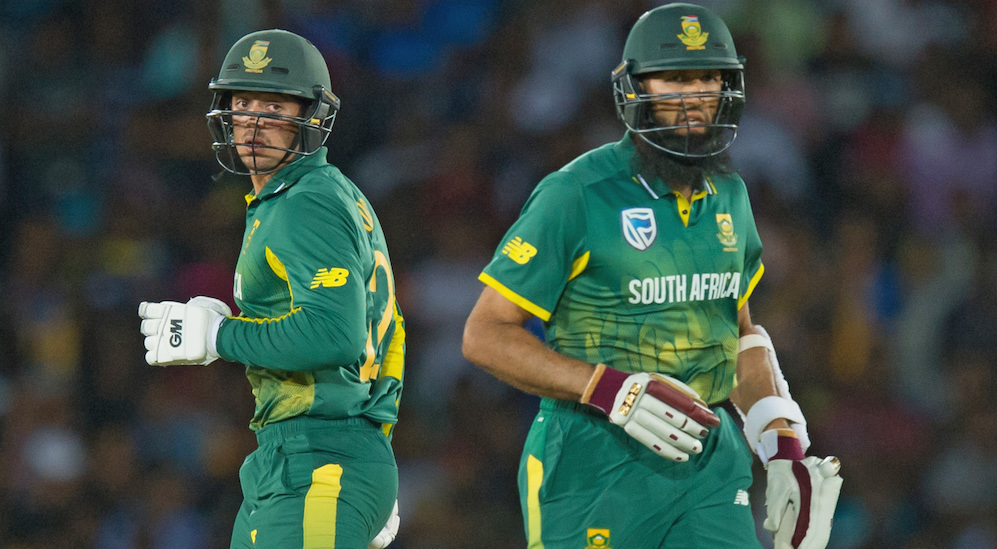The Proteas’ chances of success in the early rounds of the World Cup will hinge on the performances of their senior batsmen, writes JON CARDINELLI.
Remember that iconic shot of Grant Elliott holding out a hand to Dale Steyn as the vanquished Proteas fast bowler lay prone on the Eden Park turf? New Zealand had just beaten South Africa to earn a place in the 2015 World Cup final. Many felt that Elliott had won the game-shaping battle with Steyn in the final overs.
It would be grossly inaccurate to lay all the blame at Steyn’s door, though. Indeed, while the cricketing world focused on those last few overs of the New Zealand run chase, the truth about South Africa’s overall performance was largely forgotten.
Poor bowling didn’t cost the Proteas a place in the 2015 final. That was not the root cause of the defeats suffered to India and Pakistan during the pool phase.
The Proteas batsmen struggled in the period leading up that 2015 tournament, and were exposed in the big matches at the global competition itself. Two years later, at the 2017 Champions Trophy in England, the senior batsmen failed again and South Africa crashed out before the playoffs.
The Proteas find themselves in a similar position as they prepare for another World Cup. The squad that travels to England will boast several world-class batsmen, as well as a clutch of all-rounders with the ability to clear the fence. The bowling unit, however, was meant to be South Africa’s trump card.
When the squad was first announced, many made the point that no other team in the world possessed as potent a bowling group. With Steyn, Kagiso Rabada, Lungi Ngidi, Imran Tahir, Andile Phehlukwayo, Dwaine Pretorius, Tabraiz Shamsi, JP Duminy and the precocious Anrich Nortje in tow, skipper Faf du Plessis appeared spoiled for options. The balance of the potentially best XI was something to shout about.
Now there is an injury cloud hanging over the Proteas’ premier fast bowlers. Steyn and Rabada could miss the opening game against England, and possibly the second fixture against India, if they fail to recover from their respective niggles.
Nortje’s withdrawal has not been met with the same concern as the uncertainty around Steyn and Rabada’s availability for the opening game. Take the latter two out of the equation, and the attack loses a great deal of experience, menace and intensity. The addition of Chris Morris will not alleviate the concerns or restore balance to the side.
As a result, the Proteas may be counting on their batting rather than their bowling to make an impression and claim a big scalp or two. The pressure on the batsmen to perform is greater than ever.
Hashim Amla is already under pressure after failing to find form in recent months. Quinton de Kock and Faf du Plessis may feel the weight of expectation growing and growing in the buildup to the clash with England.
Duminy and David Miller will also need to contribute substantial scores. If Aiden Markram – a rookie in World Cup terms – is backed to play the first game, he will have a key role to play in the middle order.
The Proteas have some clean hitters down the order in Phehlukwayo, Morris and Pretorius. That said, they can’t expect these all-rounders to contribute most of the runs in the drive for totals of 320-plus.
Perhaps this is an opportunity for Morris to showcase his ability to spearhead an attack, and for Ngidi to shine in a more prominent role up front. Perhaps we will be pleasantly surprised by the team’s bowling performance at the Oval on 30 May.
That said, there’s little doubt that the attack is sharper and the team more balanced when Steyn and Rabada are part of the mix. Until both are fit and available, the Proteas will lean more heavily on their batting than their bowling.
Photo: Sameera Peiris/Gallo Images







